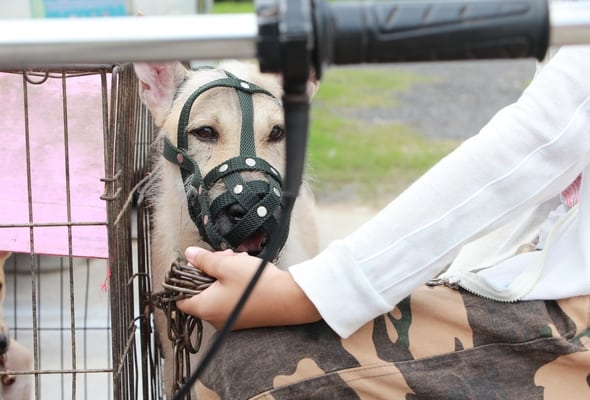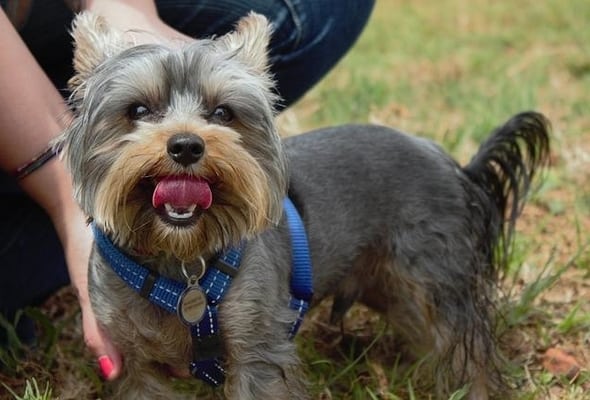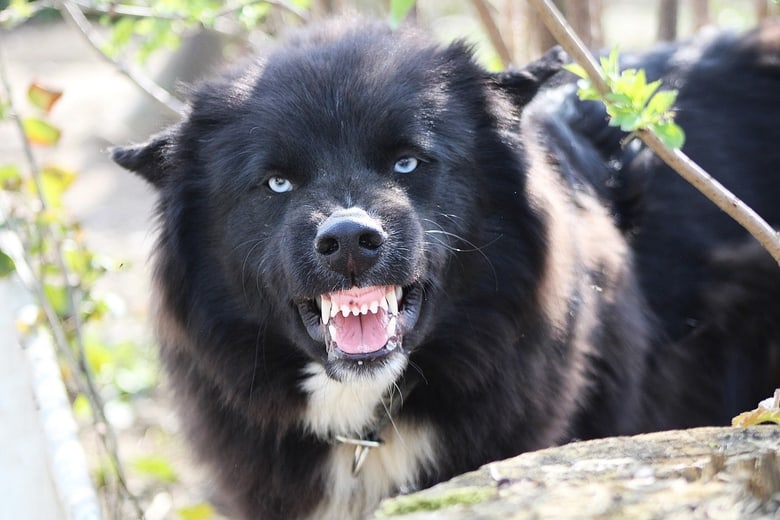Owning a reactive dog can be stressful and difficult, but that doesn’t mean you can’t successfully own and love a canine with reactivity issues. In this article, we will list helpful tips about how to socialize a reactive dog. We hope these tips can assist you and your pooch and wish you the best of luck!
6 Tips on How to Socialize a Reactive Dog
Socializing a reactive dog is extremely important in desensitizing them to the stimuli that cause them to act out. A reactive dog is a canine that is known to overreact in certain situations that could be caused by trauma as a puppy, lack of socialization, or the lack of knowing how to handle certain emotions.
1. Know Your Dog’s Triggers
The first, and most important, tip on our list is to know your dog’s triggers. You cannot begin socializing your reactive dog without knowing what triggers their overreactions. Some dogs may be reactive to men due to repeated trauma as a puppy or may overreact to certain noises like fireworks or storms.
Being able to identify when your pooch is entering a reactive state of mind is crucial to enacting safe socialization for all parties involved. Below, we will list canine body language that may indicate when your pet will begin overreacting to stimuli.
- Posture: extremely stiff, rigid, and seems to be on edge
- Hair/Fur: standing at attention on the back of the neck and down the spine
- Vocalization: growling and barking
- Lips: continuous licking of the muzzle, baring of teeth
- Activity: Hiding or staying close to the ground, lunging, and panting
2. Muzzle Training
If your dog is reactive and lashes out with aggressive behaviors, a muzzle is a great tool that keeps you, your dog, and any others safe during their socialization time.
Muzzles do not harm your pet if they are properly fitted, allow your dog to pant, and don’t restrict their breathing.
Basket muzzles are a great product that fits like a basket over your dog’s muzzle. It allows your pet to breathe while eliminating any possibility of your dog biting or injuring themselves and others.
Don’t begin by forcing your dog to wear a muzzle right off the bat, we want this experience to be as positive as possible so they can form positive associations with wearing the muzzle. Try leaving the muzzle in an area that your dog frequents, so they can get comfortable with the smell and sight.
You can place treats inside the muzzle while laying it on a surface, every time your dog puts their face to the muzzle you will want to praise them as much as possible, and reward them with another treat.
When your dog seems to have gotten familiar with the muzzle, we suggest placing a little peanut butter on the inside of the muzzle, then rewarding and praising when they lick the peanut butter off of the muzzle.
When your dog is comfortable with the feel of the muzzle on their face, you can begin attaching it to them for short periods, still highly rewarding and praising your pet when they wear it.
Eventually, your dog will begin to associate treats and praise with the muzzle and will feel more comfortable wearing it for longer periods.
3. Safe Socialization
Socialization is the best way to combat reactive dogs’ outbursts. As we mentioned previously, a basket muzzle is a great tool you can use to ensure safety for all active participants.

We do not recommend bringing your reactive dog to an environment with lots of stressful stimuli for socialization (dog parks, doggy daycare, etc.)
If your dog is particularly reactive to other pets or humans and lashes out with aggressive behavior, forming positive associations with the stressful stimuli is key. Below, we will identify a few tips for safe socialization.
Start in an area or environment that your pet feels safest in. You want to verify that you do not throw your dog into an extremely stressful situation, this will make the socialization process more difficult for you and your pet.
If your dog is reactive to people, you can begin this process by leashing and muzzling your dog before walking them around an area where you strategically placed a human to be in. The person must be within a safe distance, and not draw too much attention to themselves.
Remember, you want this process to be as positive as possible, so you will want to heavily treat and praise your dog when they do not react overtly to stimuli, and keep in mind that this process will not be successful overnight.
4. Proper Handling
When socializing a reactive dog, you want to make sure that you can properly handle them during times of much needed socialization.

Having a good quality harness and leash is a great way of being in control of your dog, especially if they tend to lunge during a reactive period.
If your dog is muzzle trained and equipped with good quality gear , this can make a world of a difference during socialization time.
With both of these tools, you should be able to bring your dog for a walk around a less-busy area while heavily treating and rewarding them when they exhibit the desired behavior.
Even if your dog just simply ignores the stimuli that normally force them to be reactive, this is exactly the behavior we want to see, so reward them appropriately!
5. Positive Associations
The ability to associate a stimulus with positive feelings and behaviors, rather than lashing out in reactive ways, is the end goal of socializing a reactive dog.
If your dog loses its mind after seeing a person walk in front of your house, you can actively challenge that frame of mind by distracting your pet with a positive experience.
This could be simply asking them to perform a command and greatly rewarding that desired behavior, or soothing and relaxing your dog with their favorite form of anxiety release (playing with a toy, etc.)
Positive associations allow your dog to stop negatively reacting to stimuli that normally send them into unwanted behaviors and reactions. If your dog is constantly living in a world of fear and pain, it will not be able to properly enjoy life.
6. Professional Help
If you have been working on socializing your reactive dog and think there isn’t much else you can do to help your dog, try reaching out to a professional dog trainer.
Professional trainers that have experience working with various types of reactivity in dogs are typically widely available at multiple different price points.
A licensed veterinarian may also have helpful recommendations, like medication for highly anxious dogs, or a specific trainer they have in mind that would pair well with your dog.
There are also countless free resources available on the Internet. Professional trainers have countless free YouTube videos with educational content, and you can find very helpful and informational articles posted by professional canine behaviorists online!
Conclusion
In this article, we discussed a wide range of helpful information about how to socialize a reactive dog. We commend you for taking this step to begin helping your dog to achieve a happy and healthy life.
From muzzle training to positive associations, you now have the building blocks to safely socialize your pooch. We always recommend speaking with a veterinary professional if your dog is having severe aggression-related issues, as the reactivity in dogs is not the same as severe aggressive tendencies.

